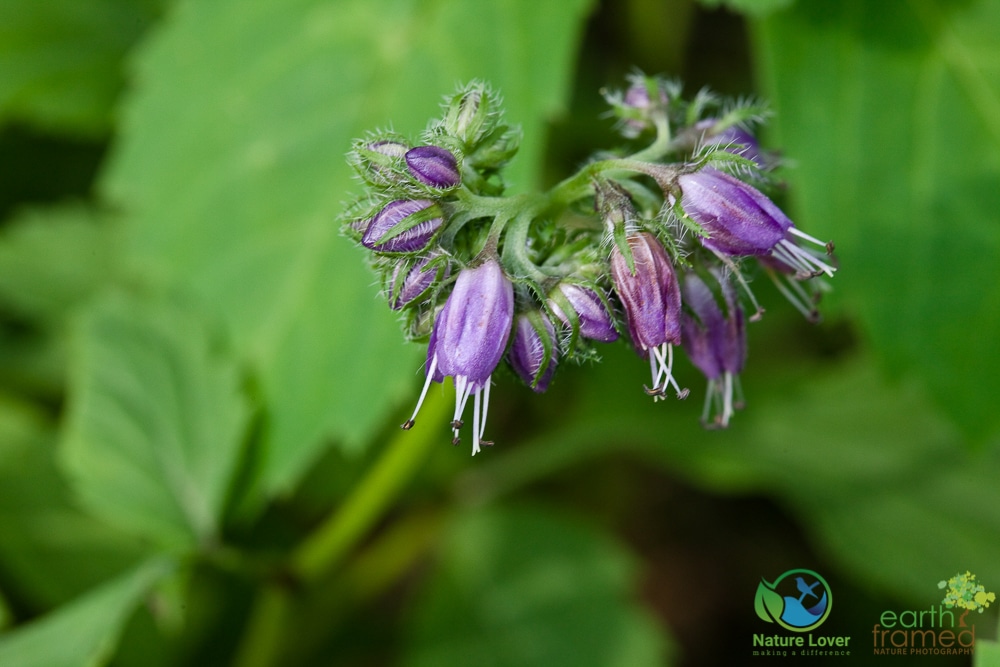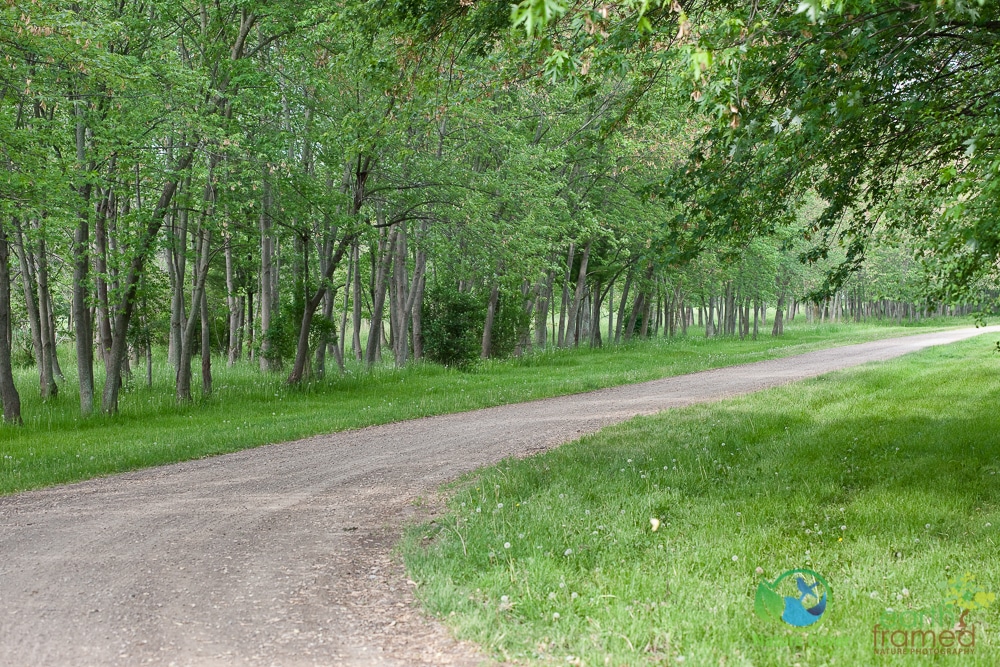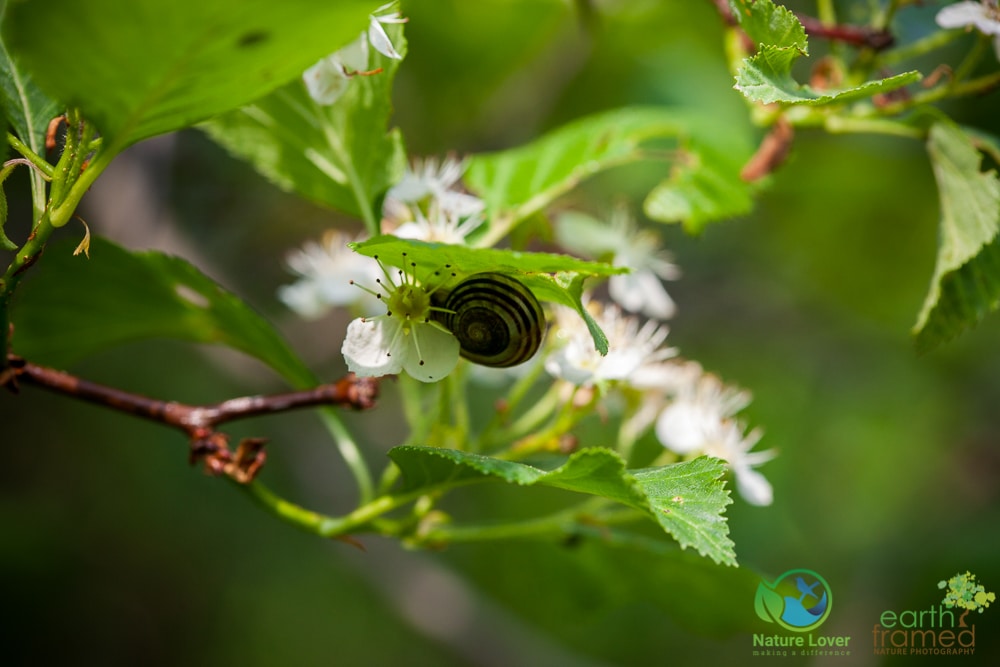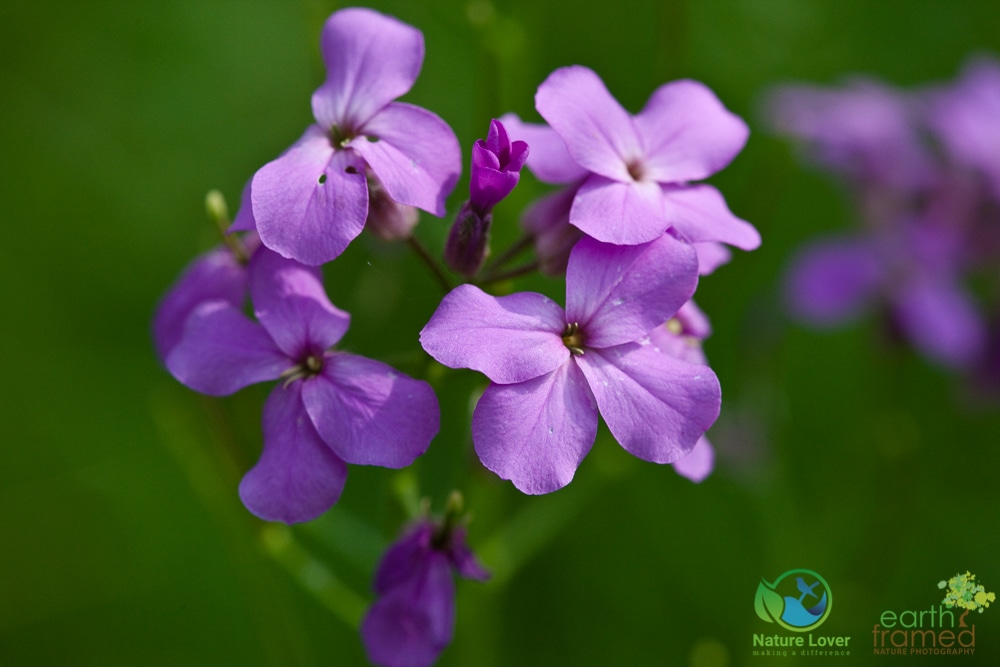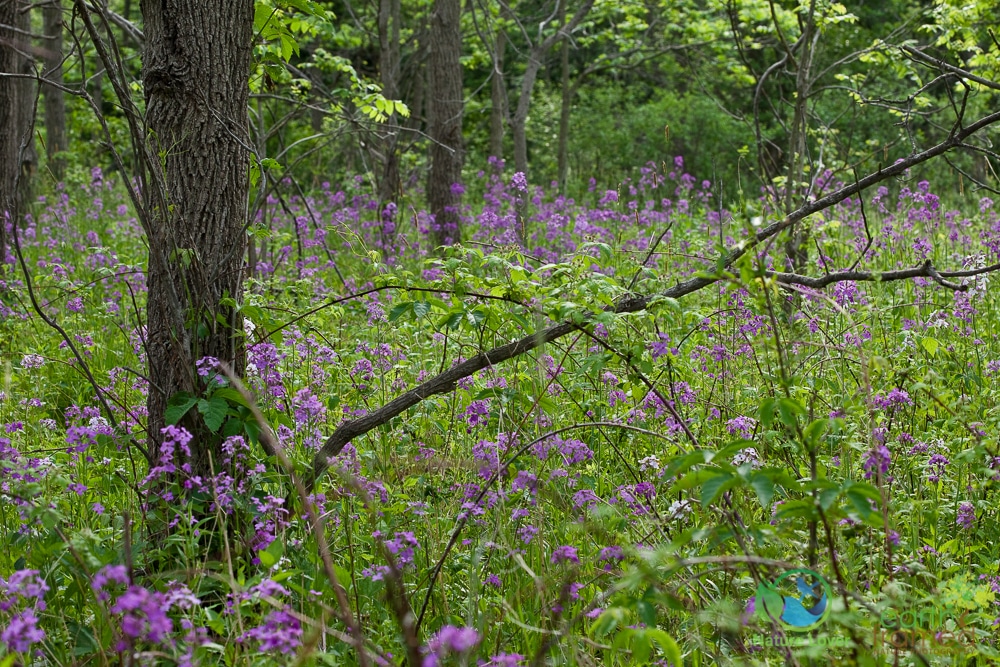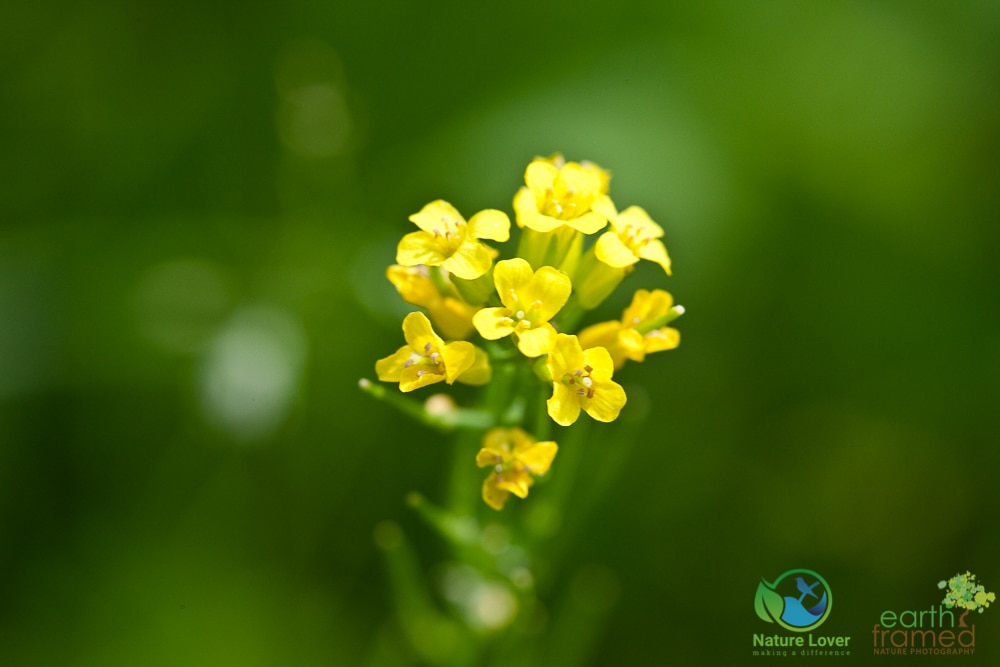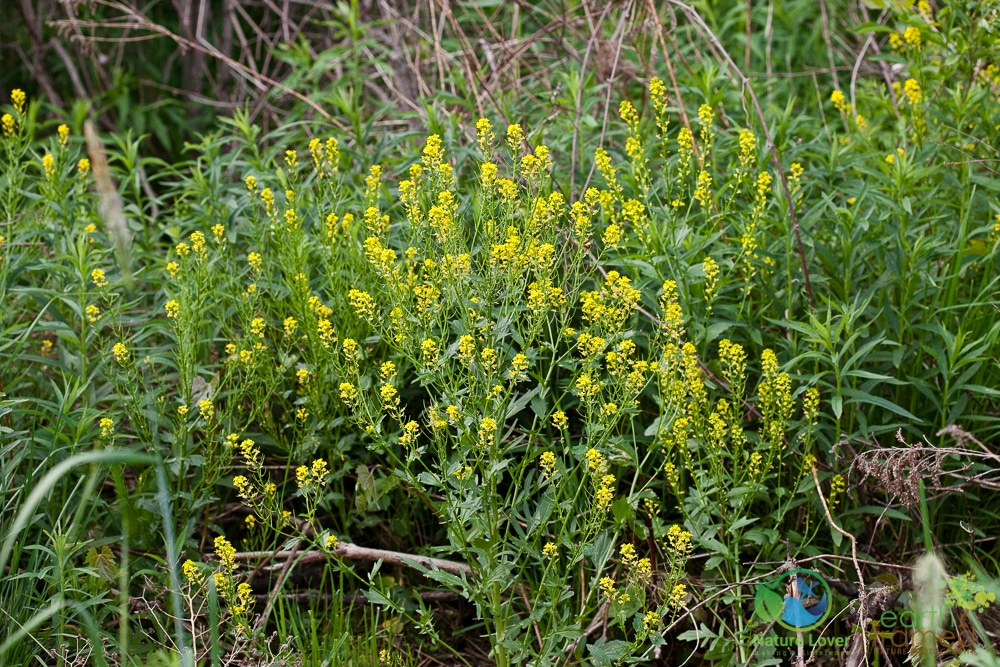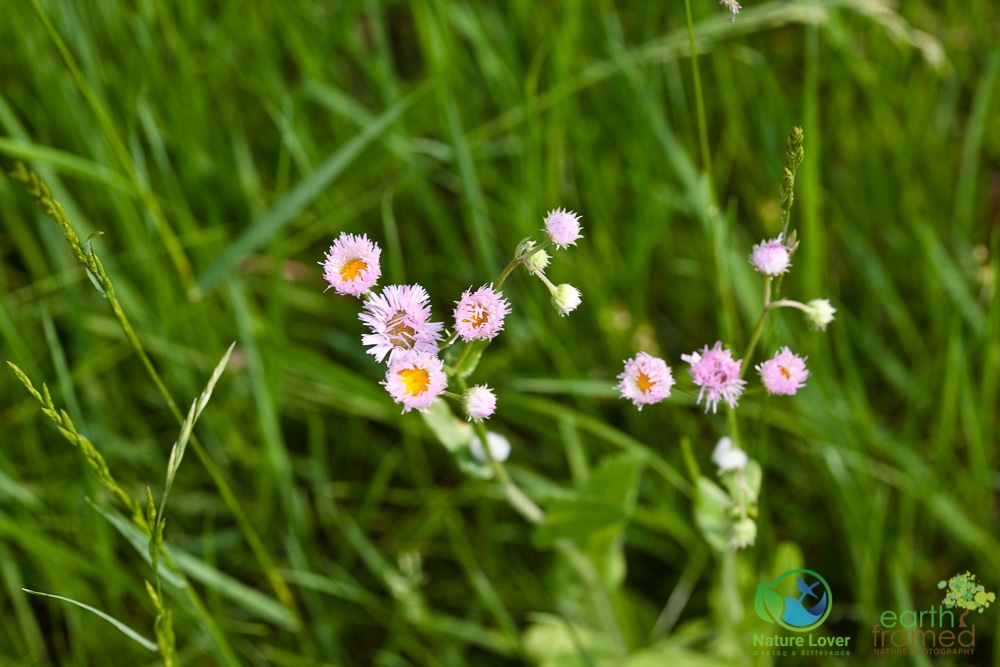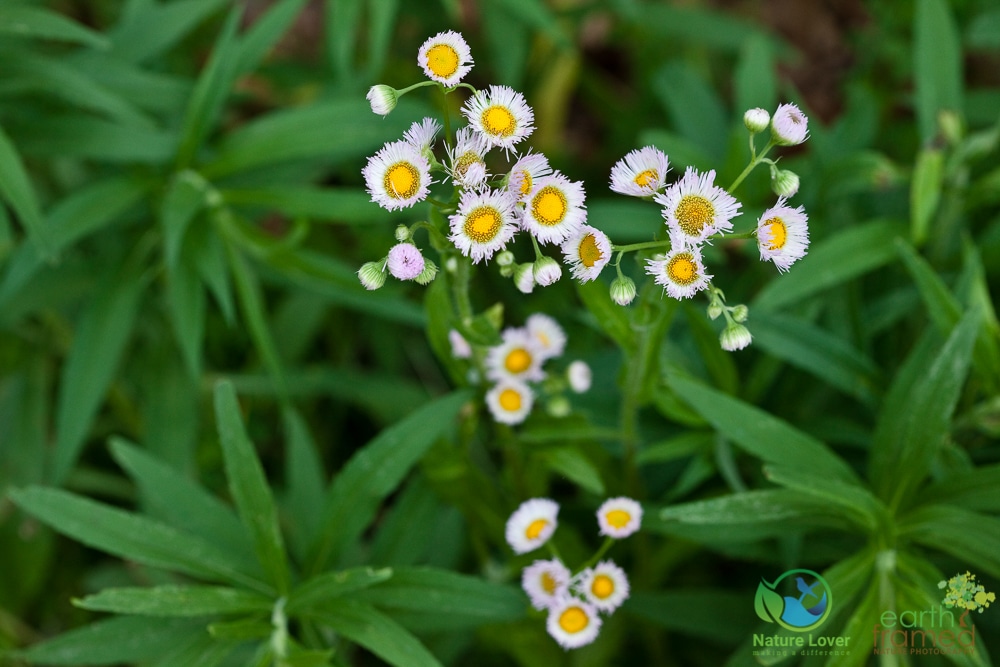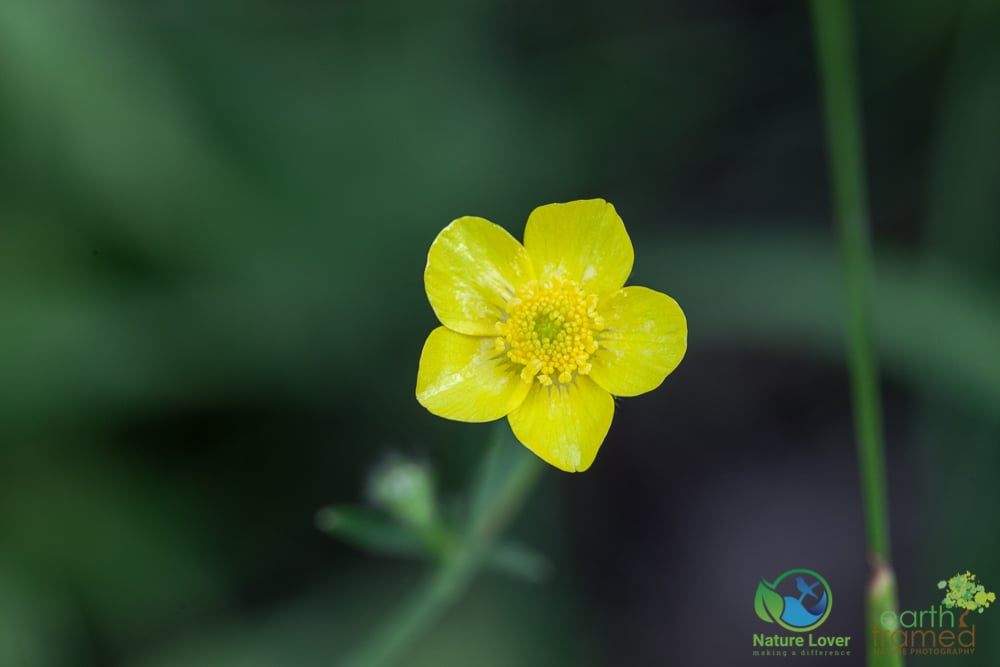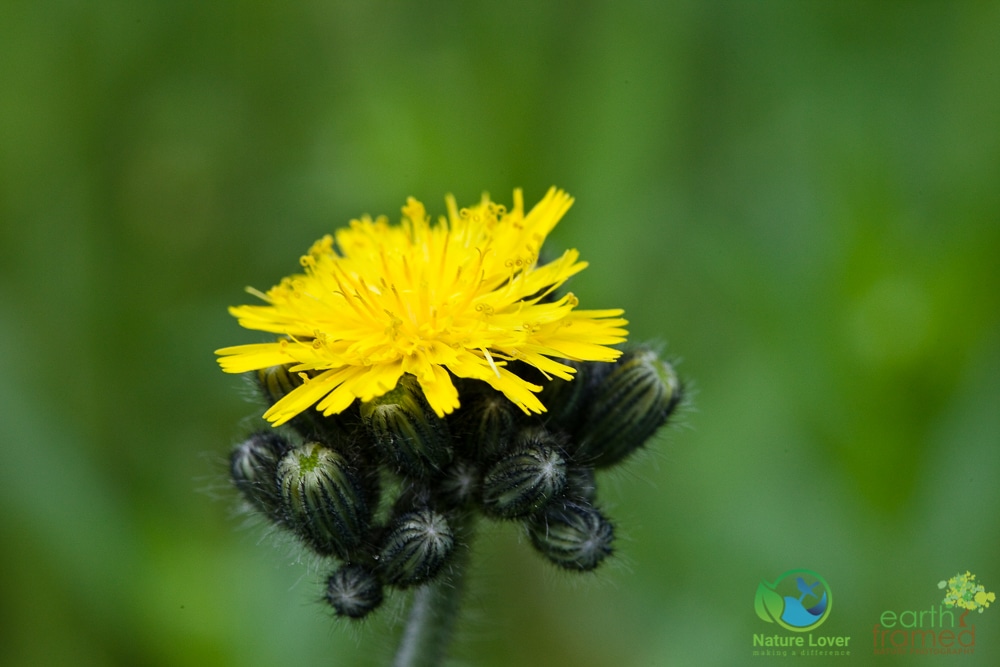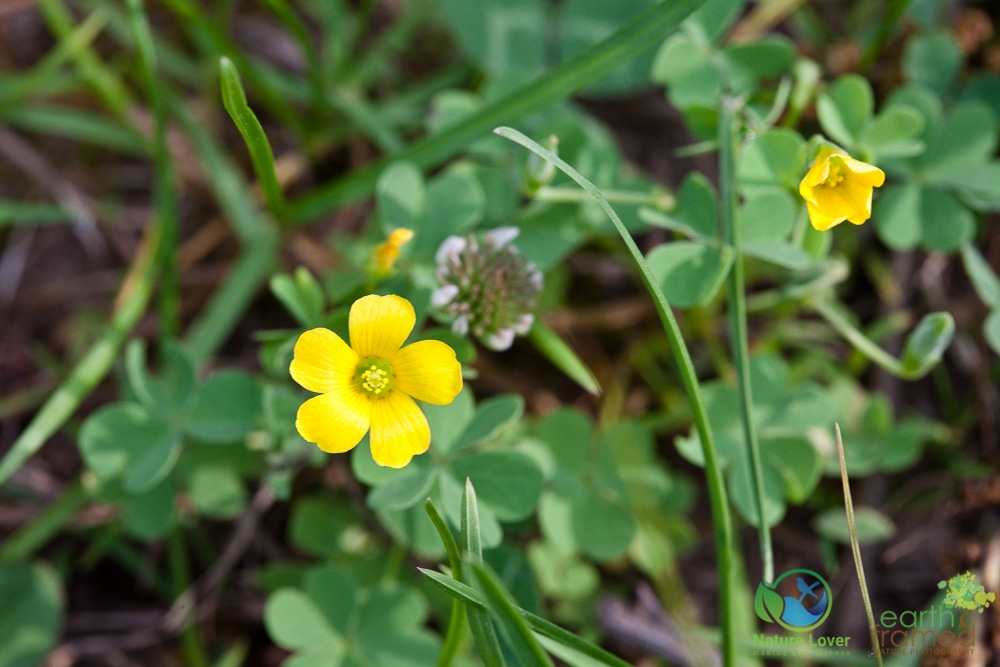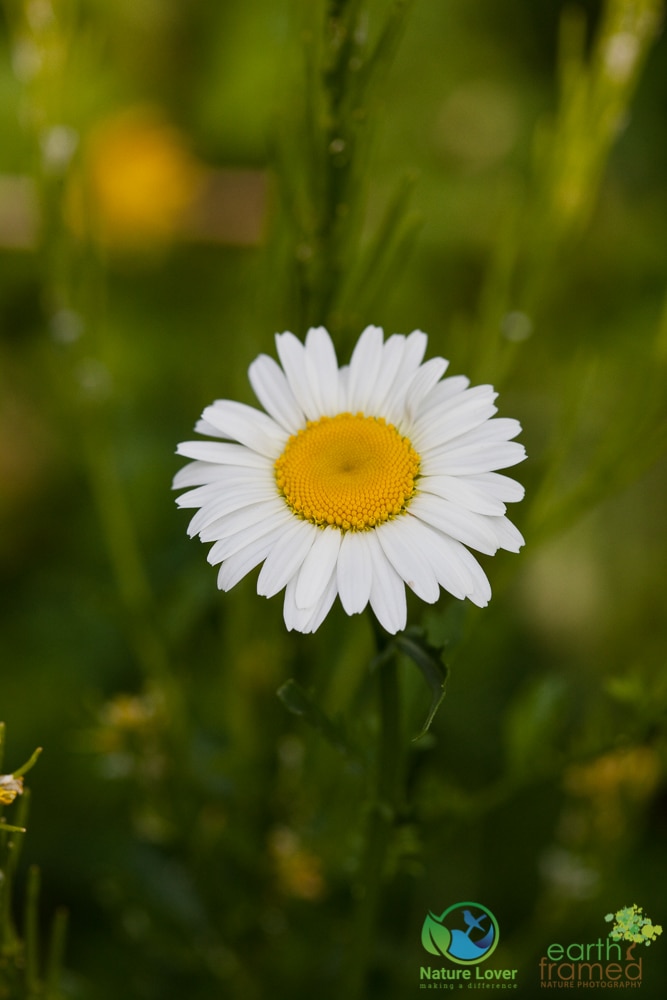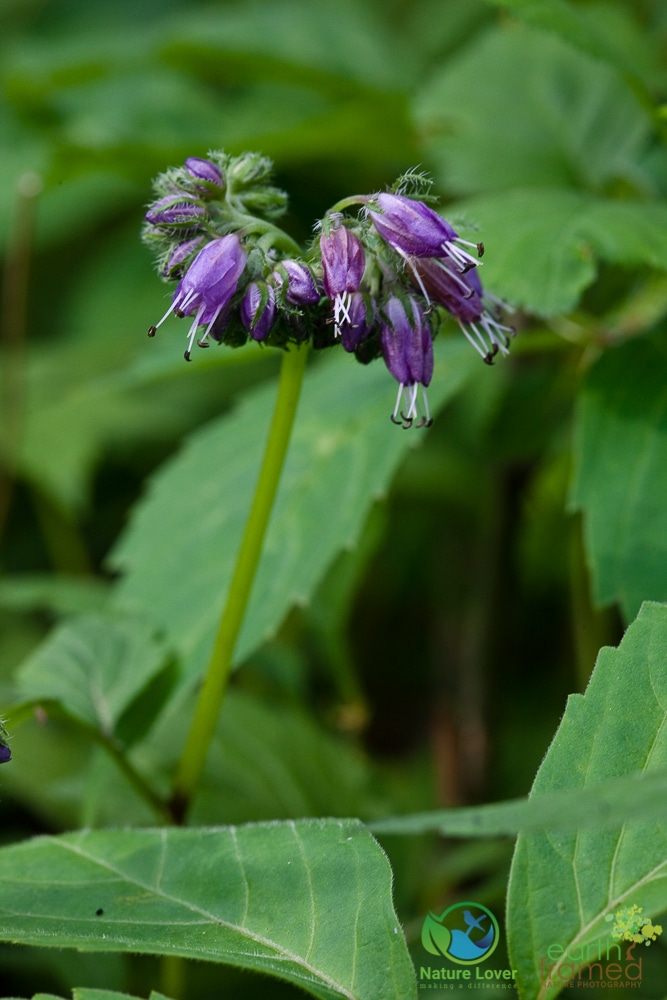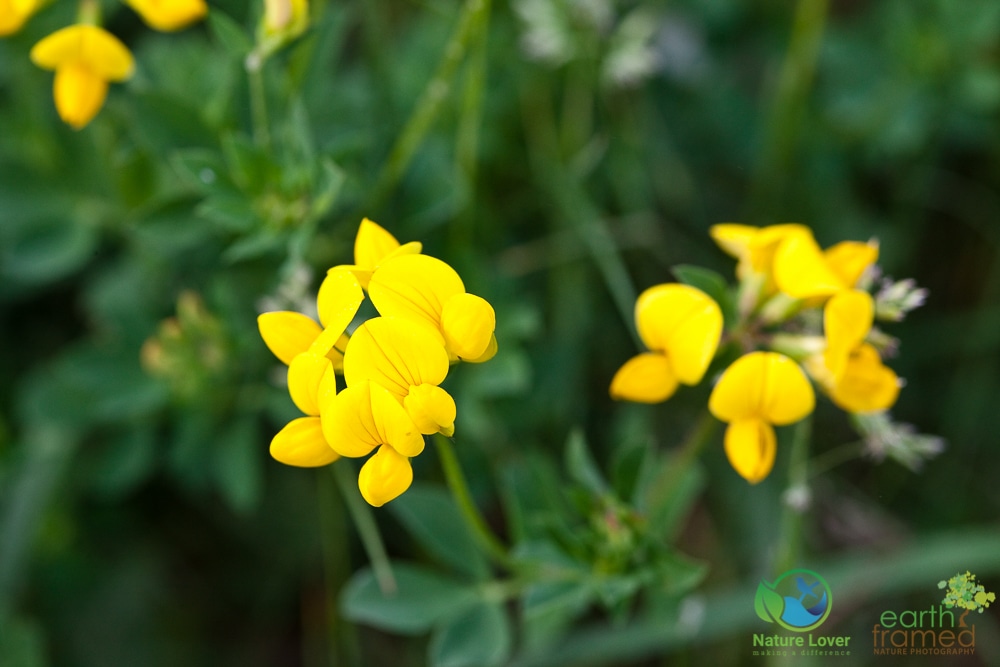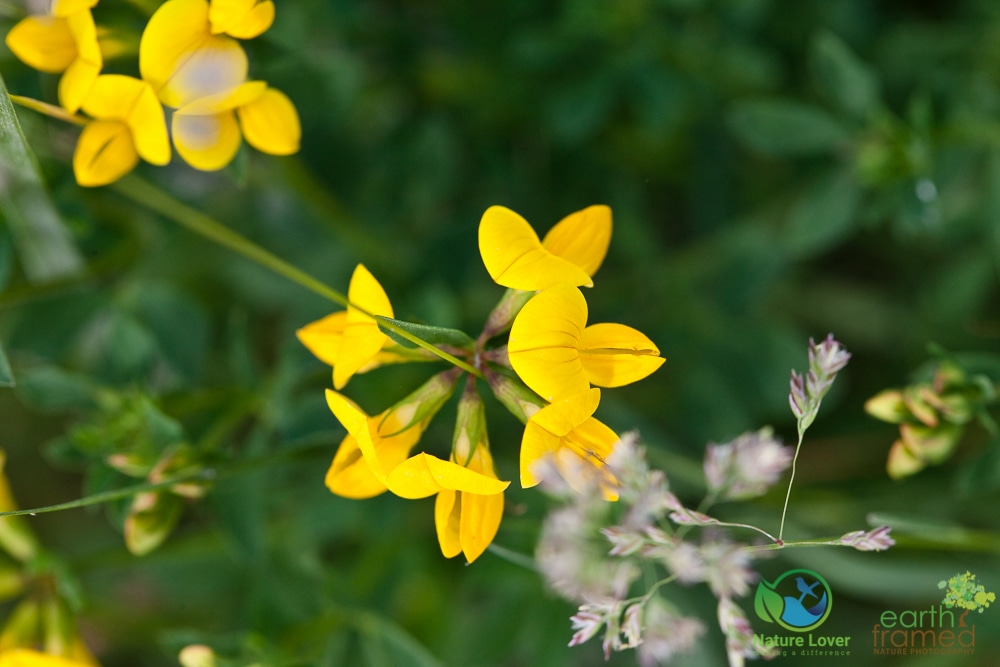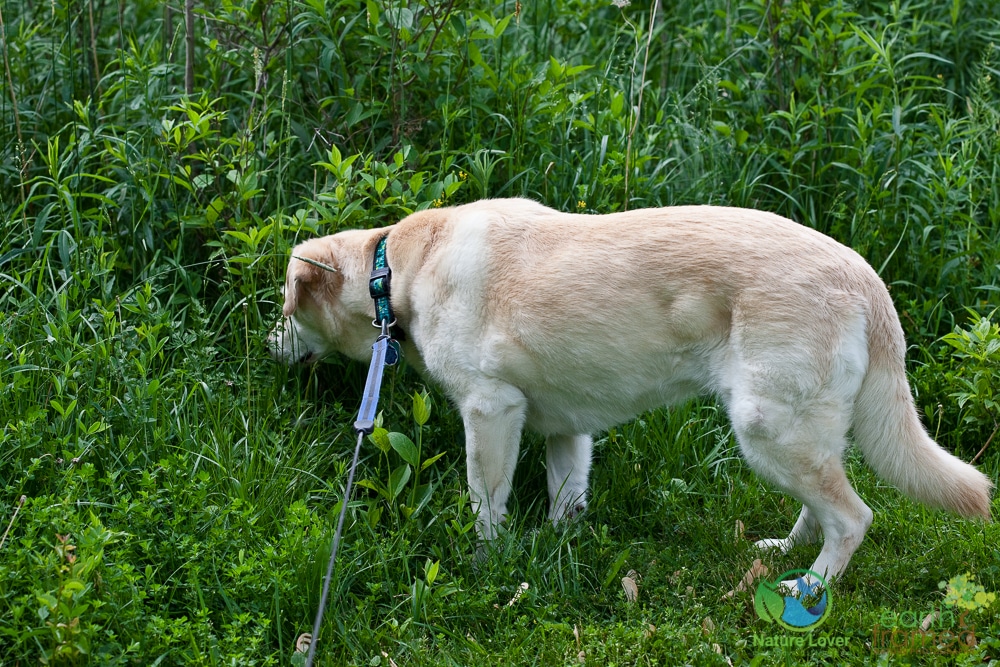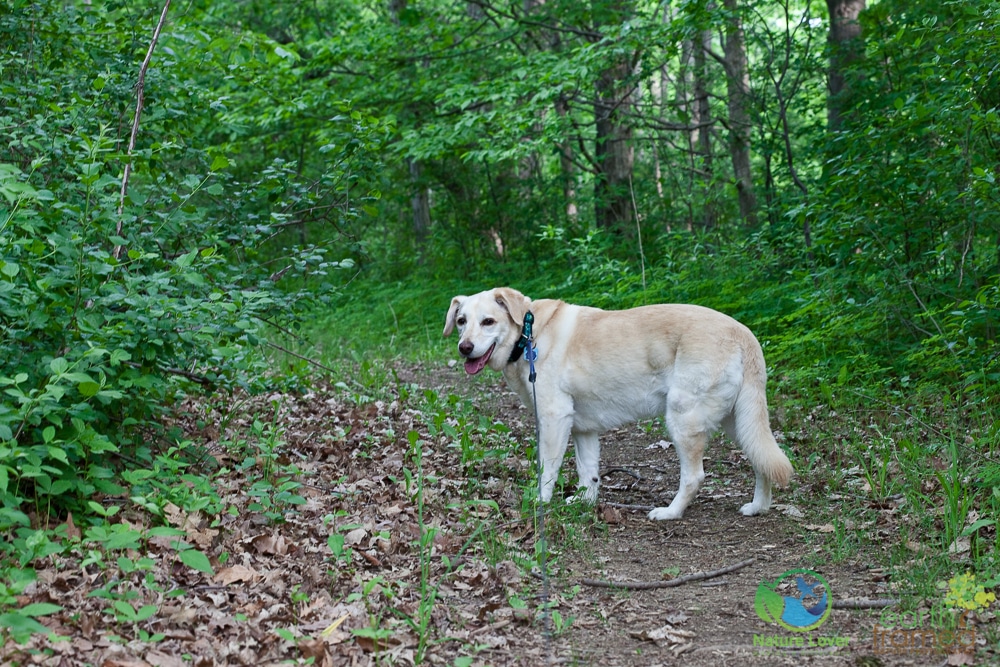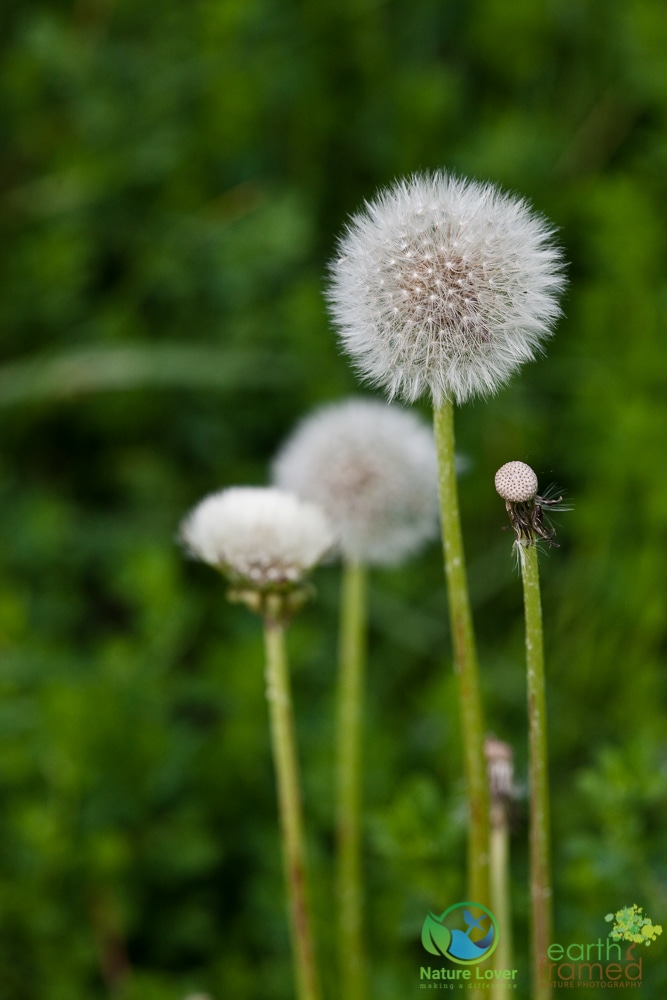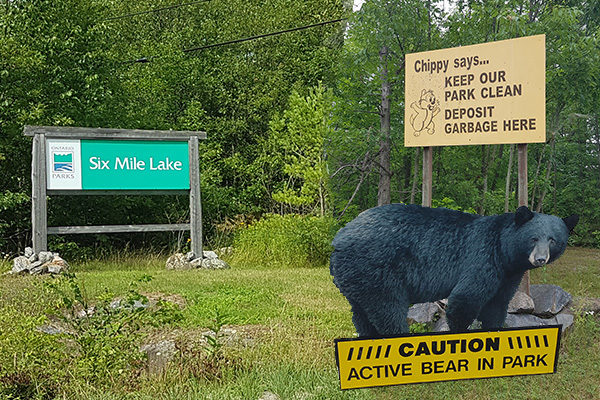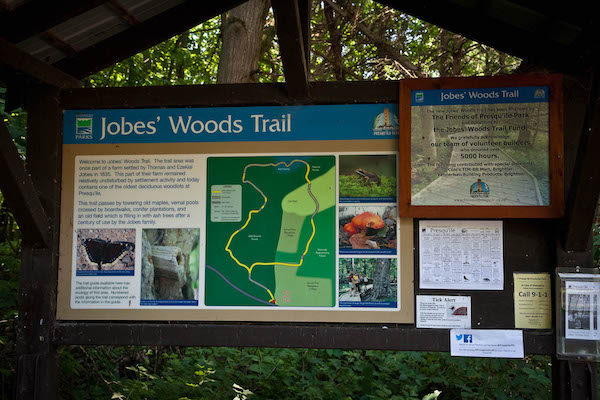It was a beautiful morning; still cool enough with a gentle breeze. During my morning walk with Maya, I decided to bring along my camera and take some photographs of spring flowers we came across. On the drive through the park we had a small Swallowtail butterfly guiding us to our trail.
The trails at the north side of the Bridgeview Conservation Area aren’t exactly named or marked but we took one just passed the dog run that winds up through the fields and forest and then loops back along the road.
The path in is very welcoming, or spooking, depending on who you ask.
Here are some of the spring flowers and other interesting things I photographed on the trail.
Red Clover (non-native)
The red clover is an interesting, non-native species with a long bloom time: May to September. Introduced as a hay and pasture crop, this flower is often found in yards and fields.
Dame’s Rocket (non-native)
This bright purple/pink flower, known as Dame’s Rocket, was everywhere. It is another introduced species from Europe.
This flowers used to be called ‘Mother-of-the-evening’ because its fragrance is more pronounced at the end of the day.
Almost everywhere you look on this trail you will see Dame’s Rockets right now.
Common Wintercress (non-native)
This is Common Wintercress, another import from Eurasia. The young leaves and cluster of flower buds can be used in salads.
The Common Wintercress is definitely very common at Bridgeview Conservation Area this spring.
Daisy Fleabane (native)
Daisy Fleabane is one of few native wildflowers spotted on this hike. The buds are usually light pink and then the open flower is predominately white.
This plant was named ‘fleabane’ because people used to believe that the dried flower heads would get rid of fleas in their homes.
Common Buttercup (non-native)
Another introduced species, Common Buttercup, is easily distinguished by its shiny, waxy leaves. This shine can make it very difficult to photograph, especially in direct sunlight.
The Common Buttercup is somewhat poisonous, because the sap is acrid, which protects the plant from being eaten.
Yellow Hawkweed (non-native)
Yellow Hawkweed, or King Devil, is from Europe and is similar to the Orange Hawkweed.
Yellow Wood Sorrel (native)
The second native species spotted on the walk is Yellow Wood Sorrel or Sour Grass, as it is also known. It is a low spreading plant with clover like leaves. If you taste the leaves you’ll find them sour-tasting.
Oxeye Daisy (non-native)
The Oxeye Daisy (non-native) is very common with is a pretty, showy flower.
Virginia Waterleaf (native)
My third native flower spotted during the hike! This is the Virginia Waterleaf and its flowers can be white or dark violet, like these are.
There was a nice, concentrated area of Virginia Waterleaf at the top of the trail. This was the first time I’ve photographed them.
Birdsfoot Trefoil (non-native)
One of my favourite flowers, even though it isn’t native – Birdsfoot Trefoil. I love the cluster of flowers and even the name!
A delicate and cute little flower.
Maya is always looking for interesting things to photograph… or to eat (not necessarily in that order).
She was also very patient with me while I was photographing during her walk.
No walk would be complete without a shot of a dandelion stage.
As you can see it can be quite difficult to find native species in urban areas. All of the introduced species are thriving and competing with what was once a native habitat. Unfortunately, native plants are too often referred to as “weeds” which makes people wary to plant them in their gardens. Some native plants are definitely best left in meadows, fields and forests but there are many “well-behaved” plants that produce beautiful flowers while being beneficial to insects, birds and pollinators. Native plants require less watering, no pesticides and increase the overall diversity in an area. Next time you’re thinking of adding new plants to your garden, think about choosing native species.


